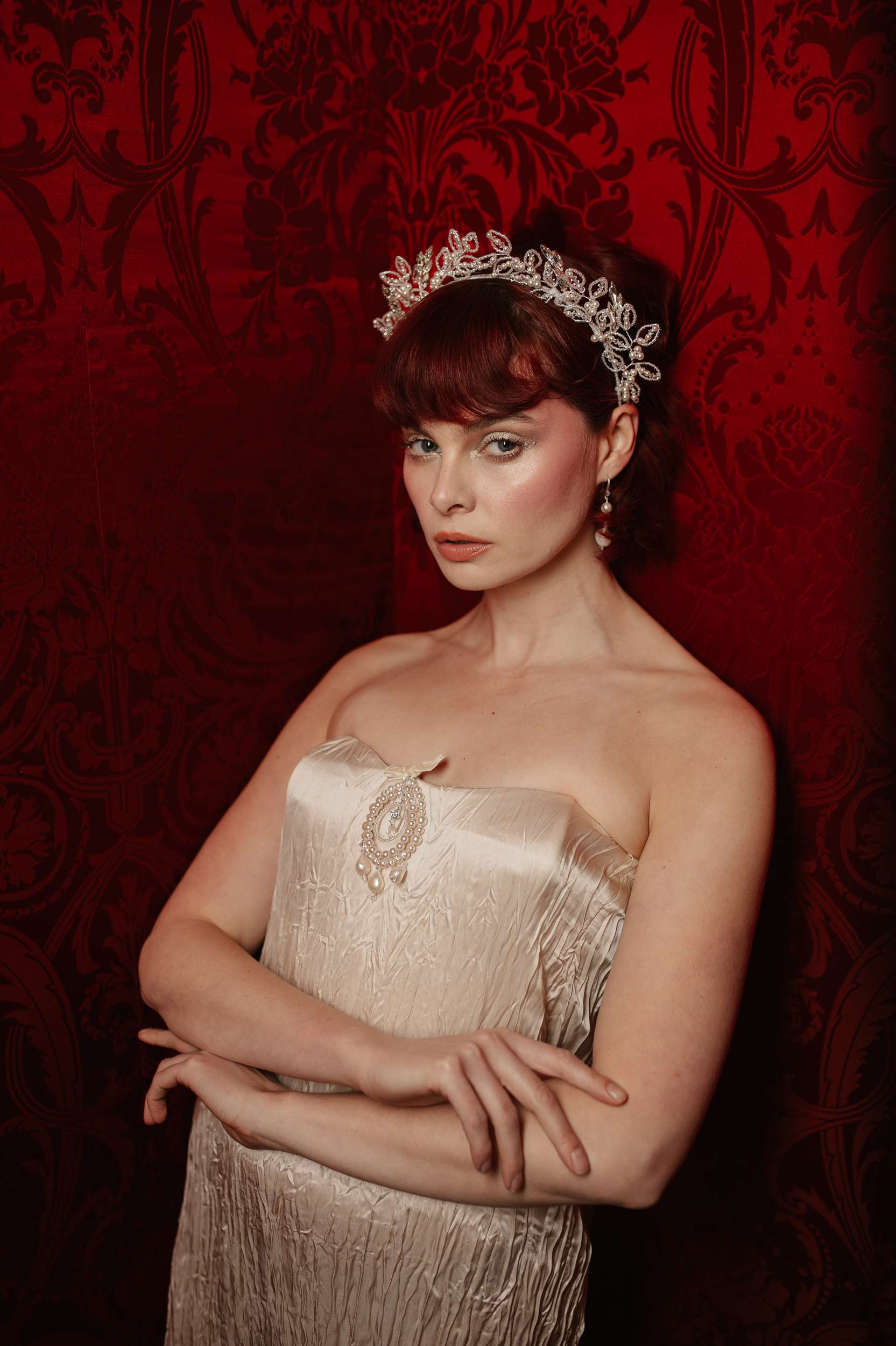
If you’ve always dreamed of wearing a vintage wedding dress, you’re not alone. Vintage has always been a popular choice for alternative brides, but it’s a growing trend in the more mainstream wedding industry again too. Nearlyweds wanting to make more sustainable, eco-friendly choices are increasing looking at vintage gowns. And when Alex Cooper, of the Call Her Daddy podcast, chose some vintage pieces for some of her recent wedding looks, it only further highlighted this as a trend for Gen-Z brides.
Beyond being environmentally conscious, buying second-hand can also be financially savvy. Most vintage gowns cost a fraction of what a new designer dress would. Vintage gowns also often offer a unique, one-of-a-kind style you simply can’t find in today’s stores. You get to choose from decades of timeless silhouettes and designs, allowing you to find a dress that complements your body shape, personality, and the overall theme of your wedding.
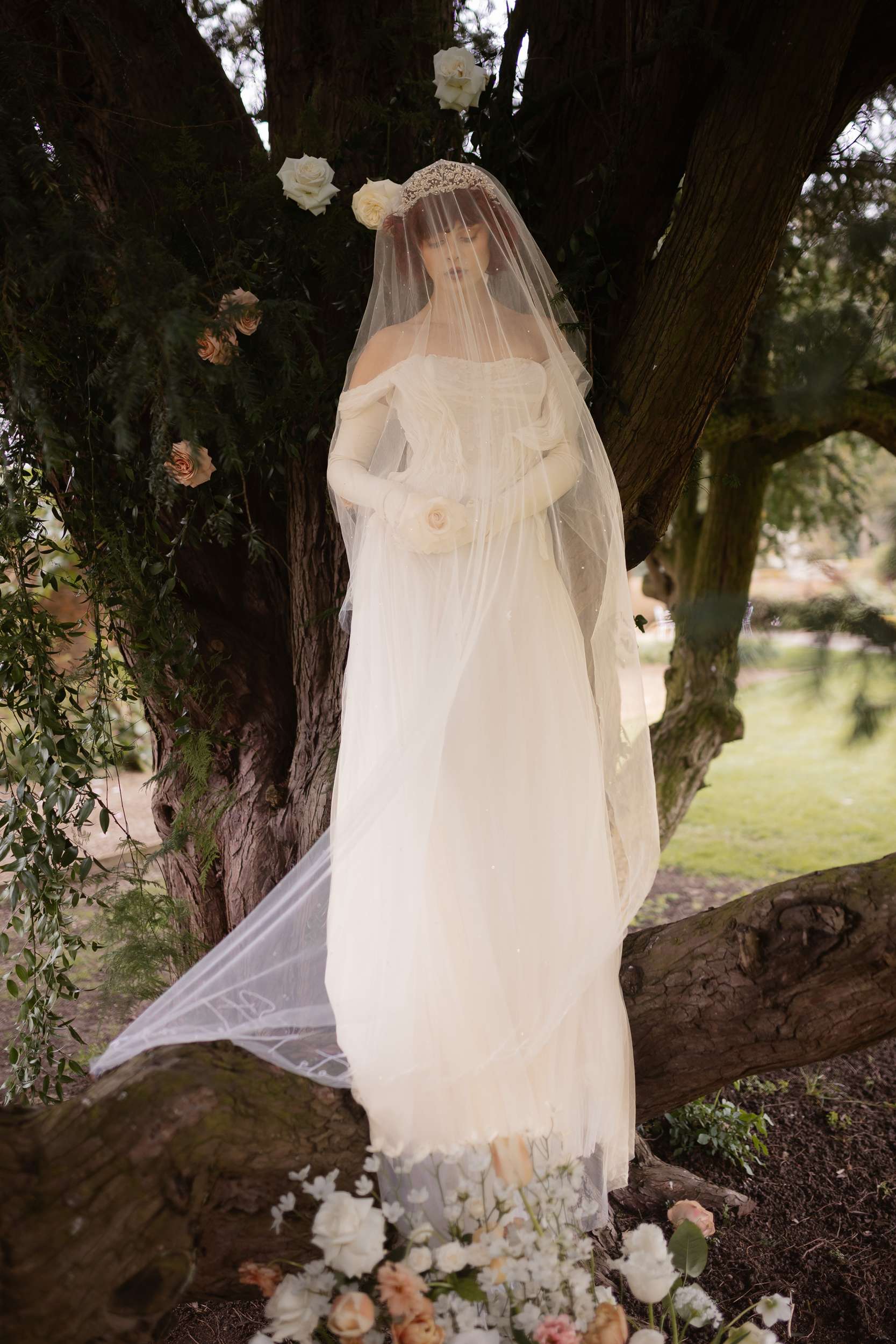
Whether you are looking online or in-person, here are three essential tips to guide your search:
1. Understand Vintage Sizing
Vintage sizing differs significantly from modern sizing so never rely solely on the listed size. Also, many vintage gowns have been custom-made or altered over time. Some online sellers may give a general size claiming it will fit a “modern size 10” for example. Keep in mind that not everyone who wears a size 10 has the same body proportions. Even modern sizing doesn’t have a standard from one designer to another so it’s important to get good measurements.
To ensure a good fit, use a measuring tape to find out your bust, waist, and hip measurements.
Bust: Measure under your armpits across your chest.
Waist: Measure the narrowest part of your torso (not where your jeans sit).
Hips: Measure around the fullest part of your hips and buttocks.
These following measurements are often overlooked and can be crucial to getting the perfect fit. If you are looking online, be sure to request them from sellers if they aren’t mentioned:
Shoulder to shoulder
Shoulder to waist
Midsection (the area between bust and waist, which includes the ribcage. Even if you have a small waist, a snug ribcage can make or break the fit of a dress).
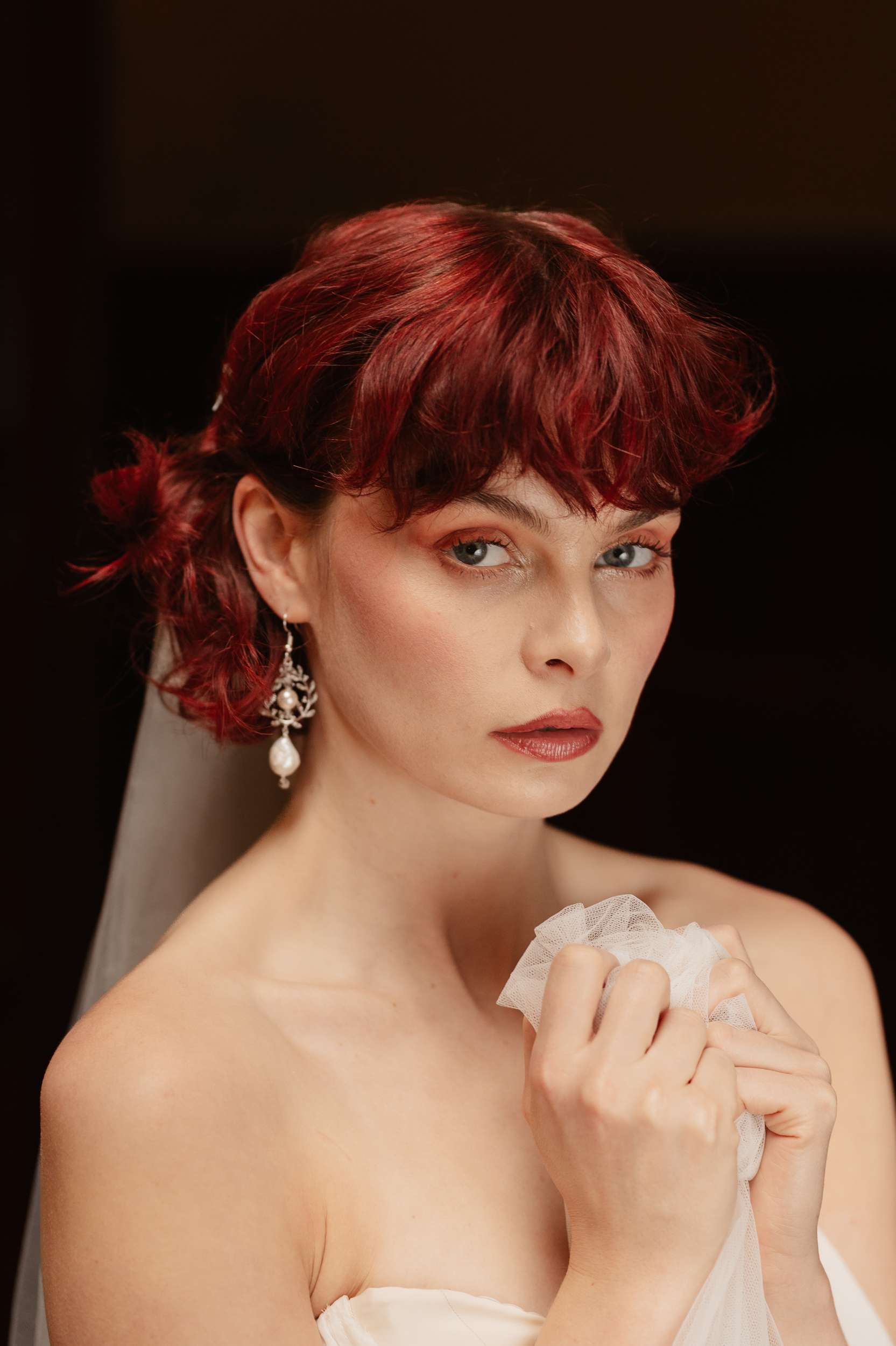
2. Inspect the Condition Carefully
Ask sellers for clear, close-up photos of any stains, tears, or signs of wear – along with details about their exact location. While some may embrace minor imperfections as part of a vintage gown’s charm, it’s important to know the condition upfront. Sellers might mention “age-related wear,” but detailed photos will provide a clearer picture of what to expect.
Do also keep in mind that older fabrics can be fragile and may not tolerate dry cleaning. In some cases, gentle handwashing and spot cleaning over multiple sessions is the best way to treat stains. However, to avoid any mishaps from doing it at home, you can always choose a professional dress cleaning company to do the tedious work for you.
Finally, don’t dismiss a dress due to small tears in the lace. If they’re along a seam or edge, a skilled seamstress may be able to repair them beautifully. With a little effort and the right expectations, you could uncover a true hidden gem.
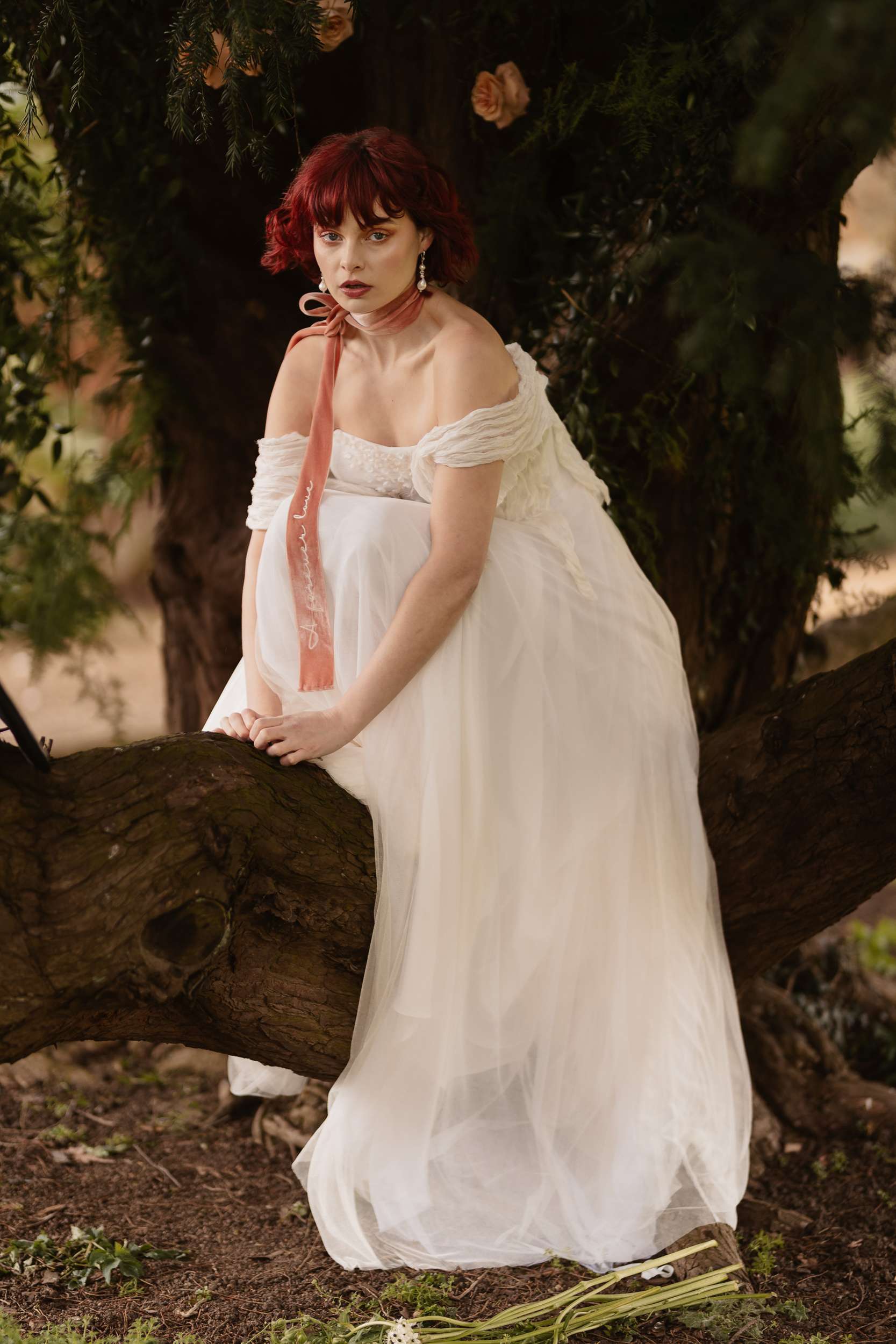
3. Be Realistic About Alterations
While some alterations – like hemming or adjusting sleeves – are fairly simple, others (like changing the neckline or overall size) can be complex and expensive. Always consult a skilled seamstress before committing to a dress. Understanding what’s feasible (and getting a cost estimate!) can save you from unwelcome surprises.
Even though vintage gowns are usually more affordable, alteration costs can add up quickly. Still, if you find a gown that speaks to your heart, tailoring it to reflect your unique style can be a deeply rewarding investment.
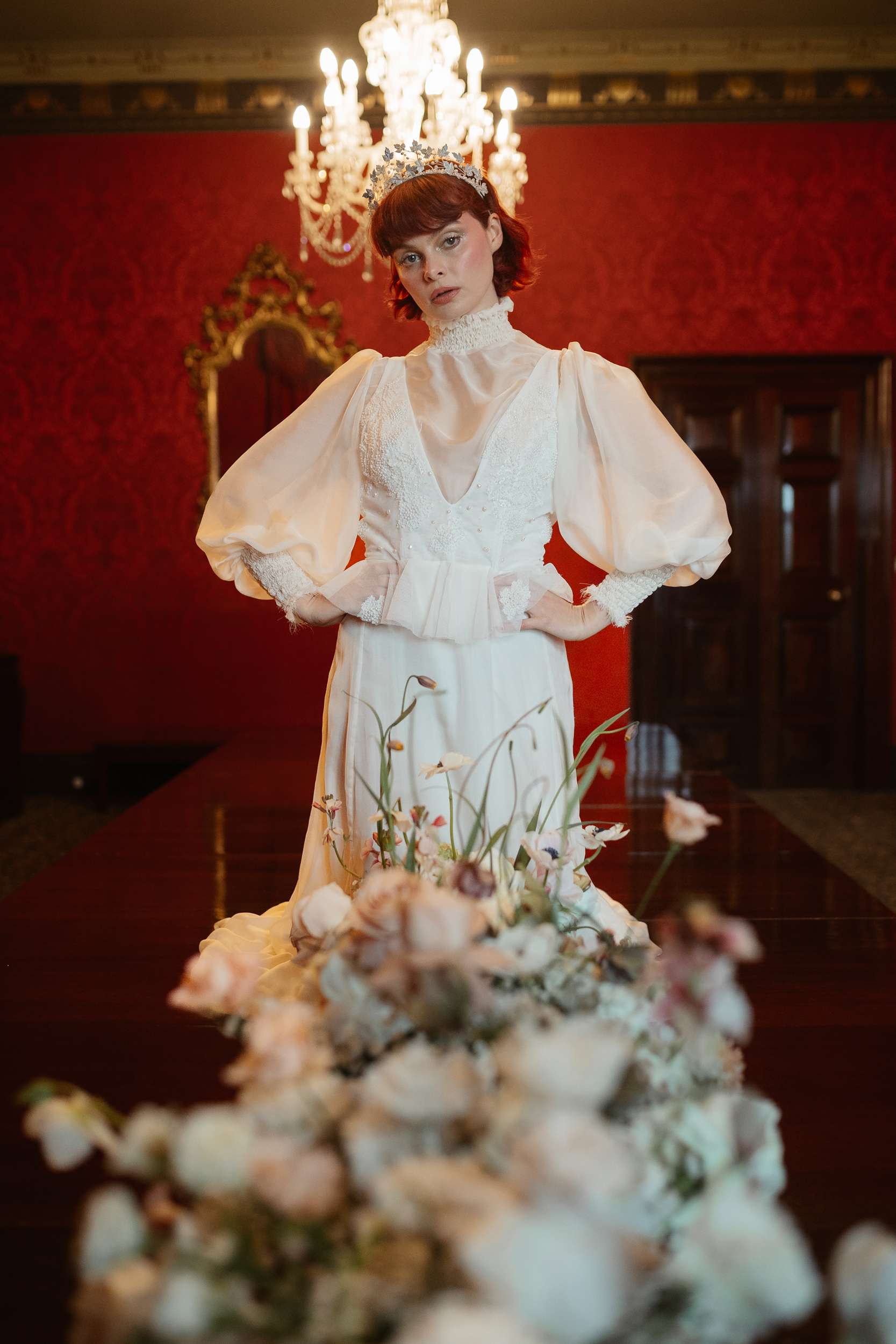
About the Author
For over 15 years, Robin Densten has operated her bridal business both in a physical retail store and online, helping countless brides transform vintage gowns into something uniquely theirs. Her shift to an exclusively online model underscored the importance of clear communication and detailed listings, ensuring brides felt confident buying online.
Robin now focuses on designing her own line of recaptured fashion, blending vintage textiles with hand-painted bridal skirts. You can explore her Etsy vintage bridal shop here and discover her current designs via her website.
Suppliers
- Photography: Sarah Brookes Photography
- Creative Direction & Styling: Joanna Southwell
- Dresses: Cora Stitch Bridal Wear
- Hair Acessories: Camille Accessories
- Veils: Rebecca Anne Designs
- Flowers: Butterfly Road
- Hair and Make-Up: Powder Blue Artistry
